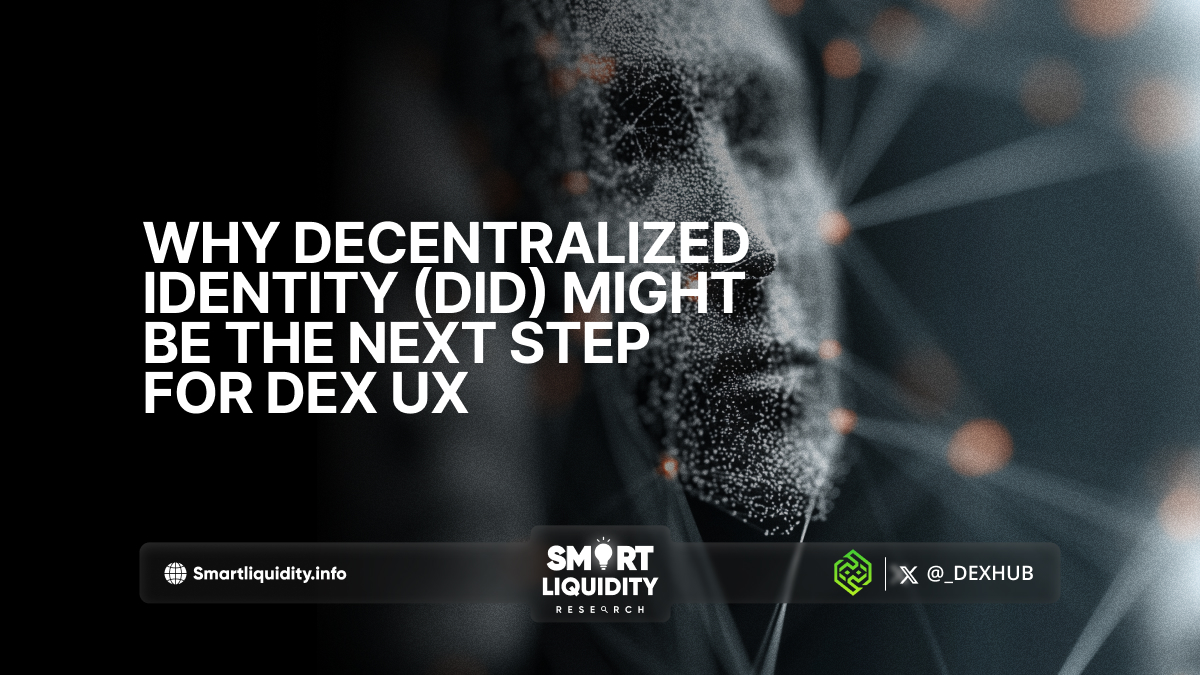Why Decentralized Identity (DID) Might Be the Next Step for DEX UX


In the world of decentralized finance (DeFi), user experience (UX) often takes a back seat to innovation. While decentralized exchanges (DEXs) offer greater control, privacy, and censorship resistance, they still fall short of the frictionless onboarding and usability seen in centralized platforms. One of the most promising solutions to this gap is Decentralized Identity (DID).
As the DeFi ecosystem matures, integrating DID into DEX platforms could be a game-changer—not just for UX, but also for privacy, interoperability, and trust. Here’s why.
The Current DEX UX Problem
If you’ve ever tried using a DEX like Uniswap, SushiSwap, or Curve, you’ve likely encountered some familiar pain points:
No account recovery if you lose your wallet.
Complex onboarding requiring MetaMask, seed phrases, and bridge tools.
Lack of user customization or history across different chains.
No native reputation or trust system—every wallet looks the same.
These are acceptable hurdles for crypto-native users, but they’re dealbreakers for mainstream adoption. Most users want to log in, make a trade, and get on with their day—without memorizing 24-word seed phrases.
Enter Decentralized Identity (DID)
DID is a way to create self-sovereign, cryptographically verifiable identities that users fully control. Unlike traditional identities issued by governments or corporations, DIDs are:
Portable across applications and chains.
Private—you choose what information to share.
Verifiable—using cryptographic proofs.
Think of a DID as your Web3 passport, containing claims and credentials that prove who you are (or what you’ve done) without revealing more than necessary.
How DID Can Improve DEX UX
Here’s where DID becomes the missing puzzle piece for DEXs:
1. Frictionless Onboarding
DIDs can act as a user’s persistent identity across wallets and dApps. Instead of signing in with a wallet every time, users could use a DID credential to instantly log in to multiple DEXs, with preferences and history intact.
Imagine onboarding that feels like Google Sign-In—but decentralized, privacy-respecting, and interoperable.
2. Portable Reputation Systems
DIDs enable decentralized reputation, meaning users can build a history of their behavior—trading volumes, KYC status, or even social verifications—that carries across DEXs.
This opens the door to trust-based features like:
Lower trading fees for high-volume or trusted users.
Community reputation scores to prevent rug pulls.
Access control for exclusive or high-risk markets.
3. Compliance Without Compromise
Regulatory pressure is increasing. With DIDs, users could present verifiable KYC or AML credentials issued by trusted parties—without handing over raw personal data.
This selective disclosure model allows DEXs to comply with regulations without compromising user privacy.
4. Cross-Chain Identity
Most DEXs today are chain-specific, and users must manage multiple wallets, gas tokens, and histories. A DID can unify user identity across chains, streamlining interaction with multi-chain protocols and reducing UX fragmentation.
Real-World DID Projects to Watch
Some notable projects paving the way include:
Spruce, Polygon ID, and Dock: Focused on DID infrastructure and credentials.
Lens Protocol: A social graph leveraging decentralized identity.
Verite by Circle: A DID framework for verifiable credentials in DeFi.
Integration of these systems into DEXs is still early-stage, but the momentum is growing.
Challenges Ahead
Despite the promise, integrating DIDs into DEX UX isn’t without challenges:
UX maturity: DID interfaces are still complex and unfamiliar to users.
Standardization: Competing DID frameworks can create interoperability friction.
Adoption chicken-and-egg: DEXs won’t integrate DIDs until users have them—and vice versa.
But as DID tooling improves and use cases mature, these hurdles are surmountable.
Final Thoughts
DEXs have already revolutionized trading by cutting out intermediaries. Now it’s time to evolve the user experience—and Decentralized Identity may be the key.
With DIDs, DEXs can combine the privacy and control of DeFi with the usability and personalization of Web2. The result? A seamless, trust-rich, and user-centric trading experience fit for the next wave of adoption.
The future of DEX UX isn’t just decentralized—it’s personalized, portable, and private.
REQUEST AN ARTICLE
Disclaimer:
This article is for informational purposes only and does not constitute financial advice. Readers are encouraged to conduct their own research and consult with a financial professional before making any investment decisions.




